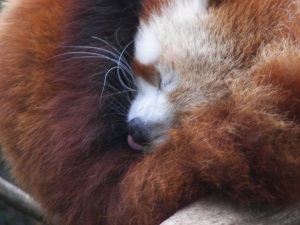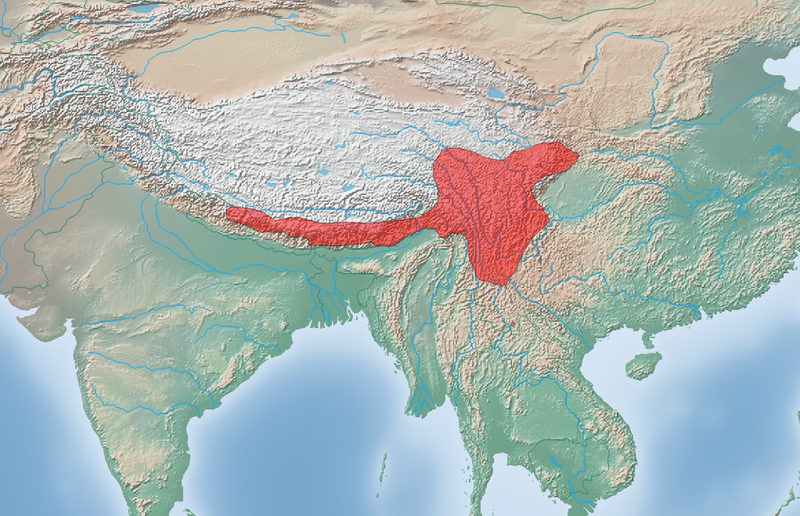Red Panda -- School-age
Red Panda
Things to Know
Two mammals in Asia have the name panda, the red panda (lesser panda) and the giant panda. Red Pandas are slightly larger than a house cat with a big bushy tail that adds 18 inches (46 centimeters) to their length, they are about 42 inches long. They generally weigh between 7 and 14 pound (3-6 kg).
It has a ringed tail and thick rust-colored (reddish brown) fur with a black-colored belly and limbs. Even the bottoms of their feet are covered with fur to keep them from slipping. It has white markings on the side of the head and above its eyes.
Red pandas spend most of their time in trees. Their semi-retractable claws help them move from branch to branch.
The red panda's scientific name is Ailurus fulgens. Scientist place the red panda in the raccoon family. Red Pandas share many traits with raccoons such as similar markings. They also use their front paws to grasp food. The red panda has also been classified as a relative of the giant pands. Currently, red pandas are considered their own unique family, the Ailuridae.
Range
Red Pandas live in southeastern Asia in the areas of the Himalaya Mountains in northeast India, south China, Nepal, Tibet, and northern Myanmar. They share part of their range with giant pandas.


Diet
Red Pandas are herbivores (they do not eat meat). Its diet is made up almost entirely of bamboo. It will also eat fruit, acorns, roots, small leaves, and bird eggs. Their unique forepaws have an enlarged wristbone that they can flex like a thumb that helps them grasp their food efficiently. When forging for food they are most active at night (nocturnal) and just before dusk and dawn (crepuscular). Red Pandas live in trees (arboreal), they even sleep in trees.
The red panda uses its tail to wrap around its body, like a blanket, to stay warm in the chilly mountains.

Cubs
Female pandas give birth in the spring or summer, typically one to four young. The baby pandas are usually born in holes inside trees. A baby red panda is called a cub. Red panda cubs will stay in the nest for about 90 days.
Endangered
Red pandas are listed as endangered. The primary threats to red pandas are habitat loss. Habitat loss due to deforestation, their natural space is shrinking. The loss is attributed to logging, human encroachment, and farming.
Red Pandas live in high-altitude mountain forests and have few natural predators. Snow Leopards and Martens are the only real predators of the Red Panda.
Book Review
Laloo the Red Panda
by Lauren Freeman
A tale of a red panda cub's adventures in India when he excapes from an animal poacher and tries to find his way back home across India to the Himalayan mountains. Along the way he makes friends and learns valuable lessons.
Video






